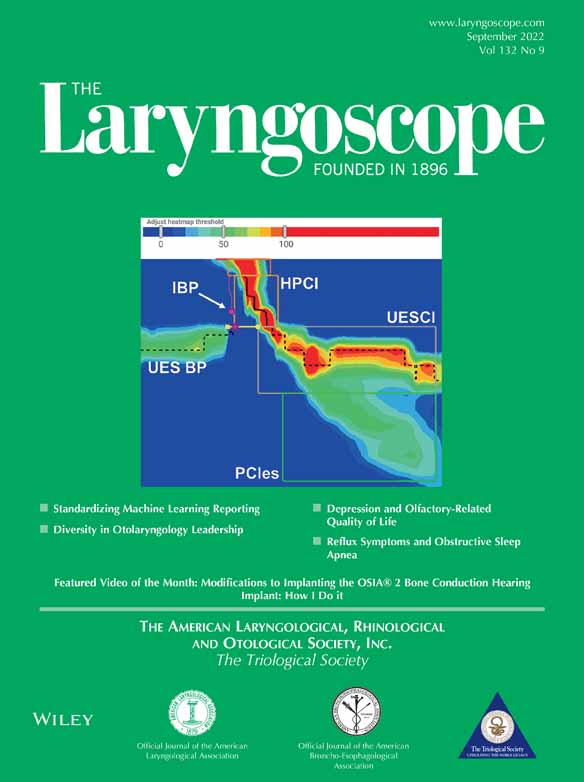Improving Survival of T3cN0M0 Glottic Squamous Cell Cancer With Elective Neck Dissection
Editor's Note: This Manuscript was accepted for publication on 24 November 2021.
Zhimou Cai, Lin Chen, and Jingwei Zhang are co-first authors and contributed equally to this work.
This work was supported by the National Key R&D Program of China (No. 2020YFC1316903); the 5010 Clinical Research Program of Sun Yat-sen University (No. 2017004); and the National Natural Science Foundation of China (No. 81972528).
The authors have no other funding, financial relationships, or conflicts of interest to disclose.
Abstract
Objectives/Hypothesis
This study aimed to elucidate the role of elective neck dissection (END) in improving the outcome of T3cN0M0 glottic squamous cell cancer (GSCC).
Study Design
Retrospective population-based database analysis.
Methods
Patients with T3cN0M0 GSCC in the Surveillance, Epidemiology, and End Results database (SEER) were extracted and stratified into END and non-END cohorts. Propensity score matching (PSM) was used to eliminate the baseline variations. The Kaplan–Meier method was performed to access the association between END and survival.
Results
We retrospectively analyzed 1,589 T3cN0M0 GSCC patients in the SEER database from 2004 to 2015, and found that only 22% to 58% T3cN0M0 GSCC were performed with END. After PSM, END cohort had better overall survival (OS) (median survival time: 93 vs. 55 months, respectively; P = .0047) and cancer-specific survival (CSS) (hazard ratio [HR] 0.48, 95% confidence interval [CI] 0.29–0.77, P = .003) than non-END cohort. In addition, Subgroup analysis also indicated END cohort had better OS or CSS than non-END cohort.
Conclusion
This study demonstrated that in patients with T3cN0M0 GSCC, END significantly associated with better survival outcomes compared with non-END.
Level of Evidence
3 Laryngoscope, 132:1807–1816, 2022




